{The is the last day of Lent 2021. And my last daily posting of sanctuary images and writings prompted by those photos. I am tempted to return to my past Lenten writings, those from previous years with themes that ranged from “wideness of God’s mercy” as seen in panoramic pics to that recent year with forty coffee mugs — to see what I had written on other Holy Saturdays. That temptation passed when I realized it was a cop-out. I need to resist re-running past material. Today’s image has been in the planning stages for several days. The writing? No clue as to where I’m going in the next hour or so!”}
Today I return to The Netherlands, and to Haarlem’s Grote Kerk, or Sint-Bavokerk, once a Roman Catholic cathedral, now a Reformed Protestant congregation. Instead of looking upward to the lofty peaked ceiling with its intricate design pointing heavenward, or up to the magnificent pipe organ chamber that sings praises even without a key being touched, I look down. To the floor. and to the tombs, or at least the graves marked by these huge heavy slabs.
For maybe 500 years someone has lain locked under those carved ledger-stones. I’m guessing that the slot in each marker is for opening up the grave for burial. Many of those stone slabs are beautifully decorated, though the designs have been worn away with centuries of worshippers walking on them. Some have dates, names, symbols, titles.
I understand that while customs vary, there may be a touch of prestige involved with placement inside the church sanctuary. The closer to the altar, the better. Or, the closer to the most important dearly departed who have earned their proximity to the holiest place in the church, the better. If the altar area is reserved for the saints (and/or the most prominent of citizenry), then being buried closer to them signaled some higher nobility. And if one hadn’t reached such notoriety by pure reputation, then one’s family might be able to buy some pricier real estate on the floor.
(I don’t remember who told me — maybe a childhood friend? — but I was advised that it was bad luck, or at least disrespectful to step on a grave in our church cemetery. One can hardly avoid such a transgression while walking cathedral aisles where nearly every step would be like stomping on a sidewalk crack and breaking your…well, you know the rest.)
I’ve read that one bit of rationale for being buried in the actual church rather than in the surrounding church yard is that if one is depending on the prayers of others to eventually spring you from purgatory, it is better that those prayers be prompted everytime someone sees your grave and is reminded to add you to their prayer list. If you were interred outside in the cemetery, visits might be very few, perhaps only annually. But with your grave right underfoot as one entered the church each Sunday, there’d be that frequent reminder that you required some prayerful attention.
At my age, I do think of death more often than I did when I was younger and somewhat carefree. (I was never totally free of cares; my Dad was a worrier and I have that gene.) My wife Joan and I have thought about what to do with our no-longer-useful bodies, and where a grave for us might be when we die (“God forbid,” as our insurance agent Barney Bass used to say — and you gotta trust an agent named Barney, right?). We’ve decided. And soon we may as well invest in the plot. It’ll be outside, in nature’s beauty, which this past year was snow-covered for months on end.
Speaking of end, my instructions for my obituary are few. But of utmost importance is mentioning my actual death. I will die. I will not “pass away.” I will not “be reunited with [anybody].” (I don’t think that’s even Biblical.) I will not “pass into the arms of Jesus” who I assume has his hands full finding parking spaces for the really, really faithful. I will not move “from this mortal coil,” which sounds like a broken Slinky. I will die. Dead. Maybe I will see those who have gone before. (“…Gone…?” There; even I did it. “Died” before.) Maybe a lot of things.
There’s no denying it, though I would prefer to. See… Jesus died. Dead. And buried. Instead of “Holy Saturday” maybe we should just call this “Tomb-day.” I mentioned in my italicized introduction that I was tempted to go back and see what I had written on my previous Day 40 of Lent posts. I’m betting that I wrote of the disciples laying low, fearful that what happened to Jesus might happen to them if they were named co-conspirators. I may have noted that I would have been with them, huddled against discovery, shaking in my sandals. But today, I’m more interested in what was going on with Jesus that Saturday.
Nothing. He was entombed. But I do have these questions. Fully human, fully God, the creed says. So, was there any secret spiritual communication going on? Did Jesus dream? No, he wasn’t asleep; he was dead. Because if he was merely asleep, then the resurrection wasn’t real. It was more a resuscitation, and that doesn’t make for Easter, more an EMT medal of some kind. My cousin Dave was headed to the ministry early in his college days, but decided on science instead, and taught college botany his whole career. Yet, he still seemed to consider God a reality. But not life after death. “I’ve taught biology all my life, and I know full well what happens when something dies. It dies. Deteriorates. End of story.” Dave now knows one way or the other. I hope he was pleasantly surprised. (But that’s tomorrow’s story, not today’s, and you will have to write it yourself. Lent will be over and so will these writings.)
As I said, I do have some questions. Death is such a mystery. Our elderly Vermont farmer friend had one question for his pastor after his wife’s death, and he posed it to me many times. “I don’t understand. Where is Marion? Where is she?” Albert had been an aircraft mechanic during WW2, and as a long-time farmer his knowledge of mechanics and agriculture and woodworking made him a man of many talents. He knew time and space and things. But he had to know where, in death, Marion was. I tried over and over to explain that beyond our physical death there was no physical place, no measure of time or acreage, that all was in the mysterious (to me) realm of pure spirituality. Albert wasn’t having it. And I wasn’t really getting it myself. As I said: mystery.
Oh, there’s a lot in the Bible about graves opening up, trumpets blowing, the dead rising up. But that was all written when even those God-inspired writers thought the heavens were a canopy with holes through which light shine penetrated, and the earth was flat, and viruses were demons, and some people were ritually unclean and untouchable. That’s why there’s no book of the Bible that is titled, “Here’s What You’ll Find in God’s Heaven.” (You’re right. I don’t take the Book of Revelation(s) as a literal map to doom and glory.)
Here’s where I must lean on God’s continual and constant message of grace. Love. Abundant life. God is good, and God is with us. As God was with Jesus even behind that rock that locked the tomb.
I keep wanting to say that when Jesus made his post-resurrection appearances, he didn’t tell… anyone anything about… but, see, that is still in tomorrow’s morning sunrise, not for discussion on Tomb-day. We have to remain here in the dark awhile longer.
And avoid stepping on ledger-stones lest we wake the dead. Or send our mothers to chiropractors.
{An italicized postscript: I know I have written lightly about a profoundly sad part of everyone’s life. We have lived through a year of loss, with headlines day after day announcing the deaths of strangers, friends, family members, and neighbors, to a deadly pandemic. Hearts have broken, tears shed, and emptiness endured, and even with vaccination protocols, there is no definite end in sight. Even on Easter Sunday, that day that explodes with promise, that lights up with new life, the newspaper obituary pages will note the sorrow of survivors, those left behind to grieve. I have lost family members, not to a pandemic, but to the natural death that ends even younger lives. And at my age, I will encounter the deaths of former classmates, neighbors, good friends, and family members more frequently until my own last breath. I know how to take it seriously. And the profound mystery of it all both haunts and encourages me. I have always considered myself a creative, imaginative person, but here’s what I cannot imagine: my own non-existence. I would rather hold to that which I know, and that is faith, living and breathing faith. Thank you, Jesus.}




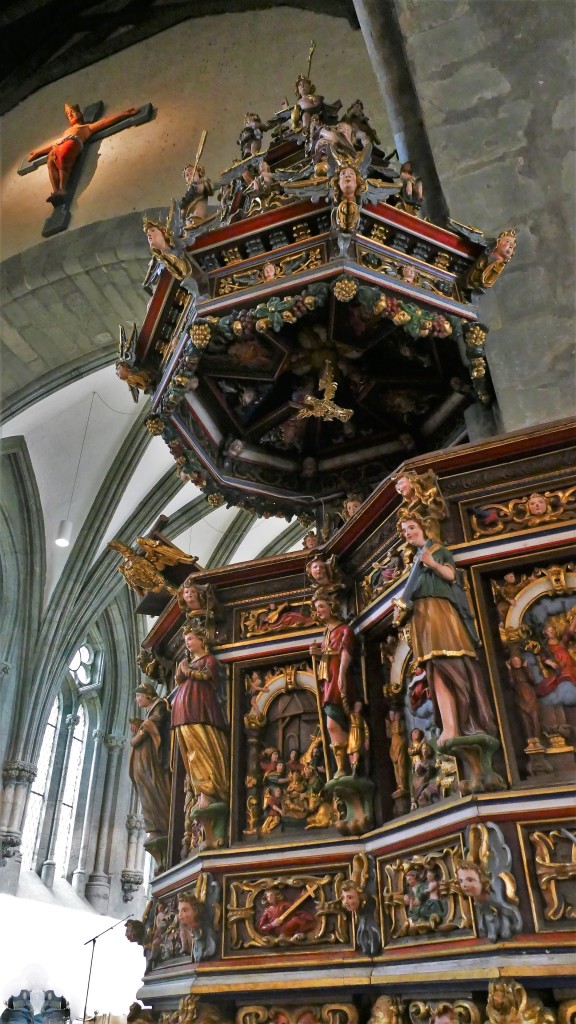
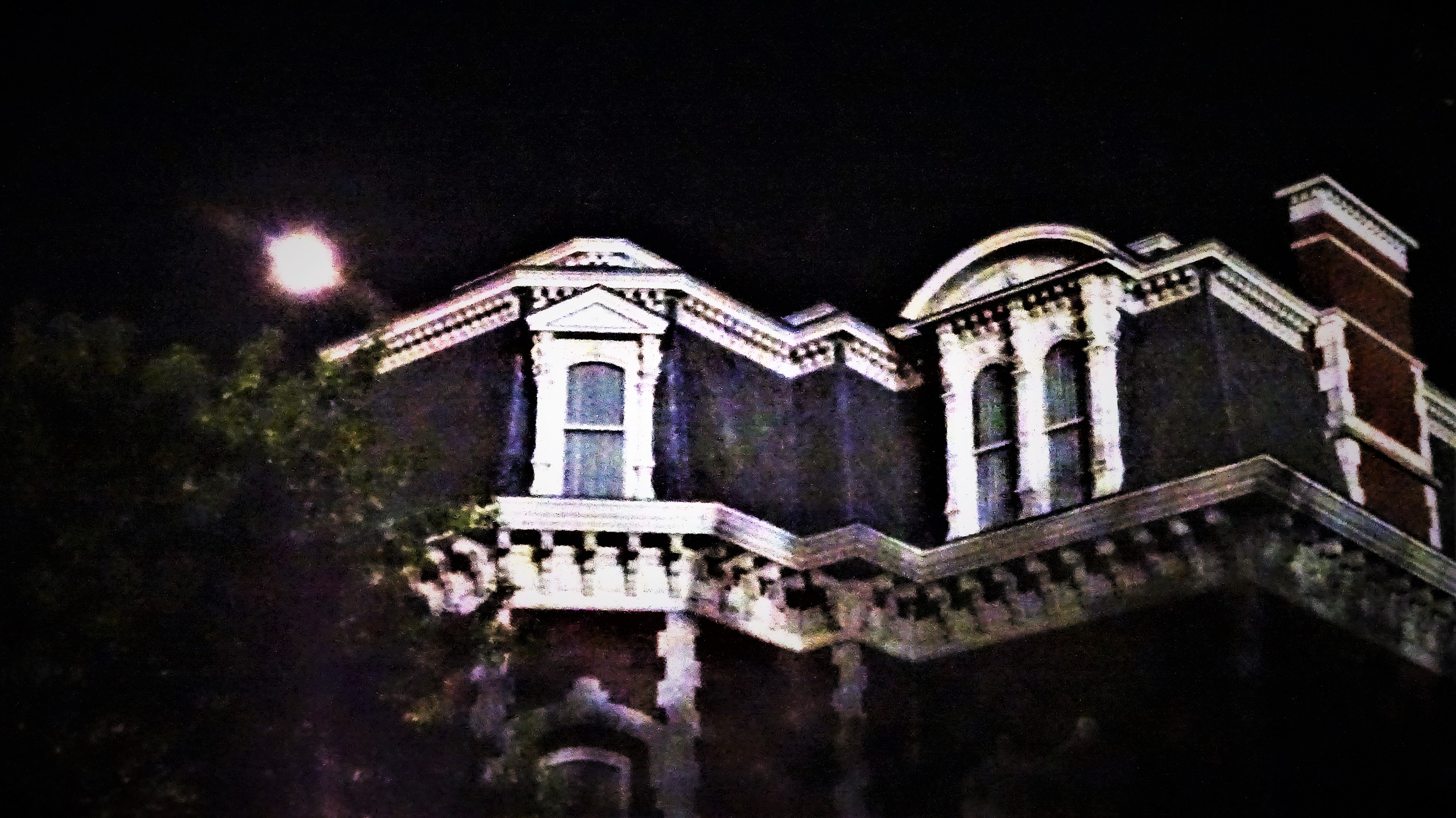
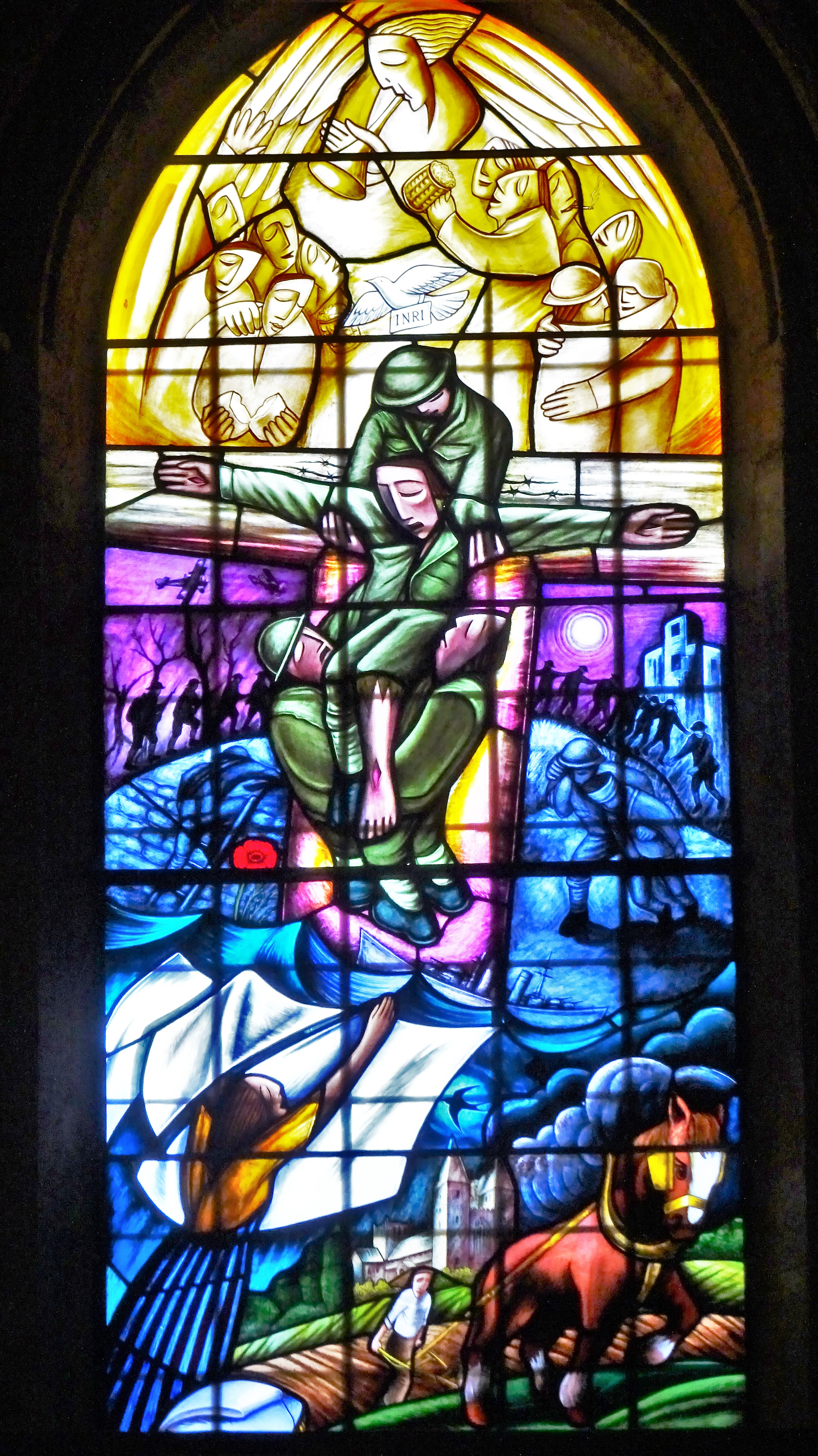
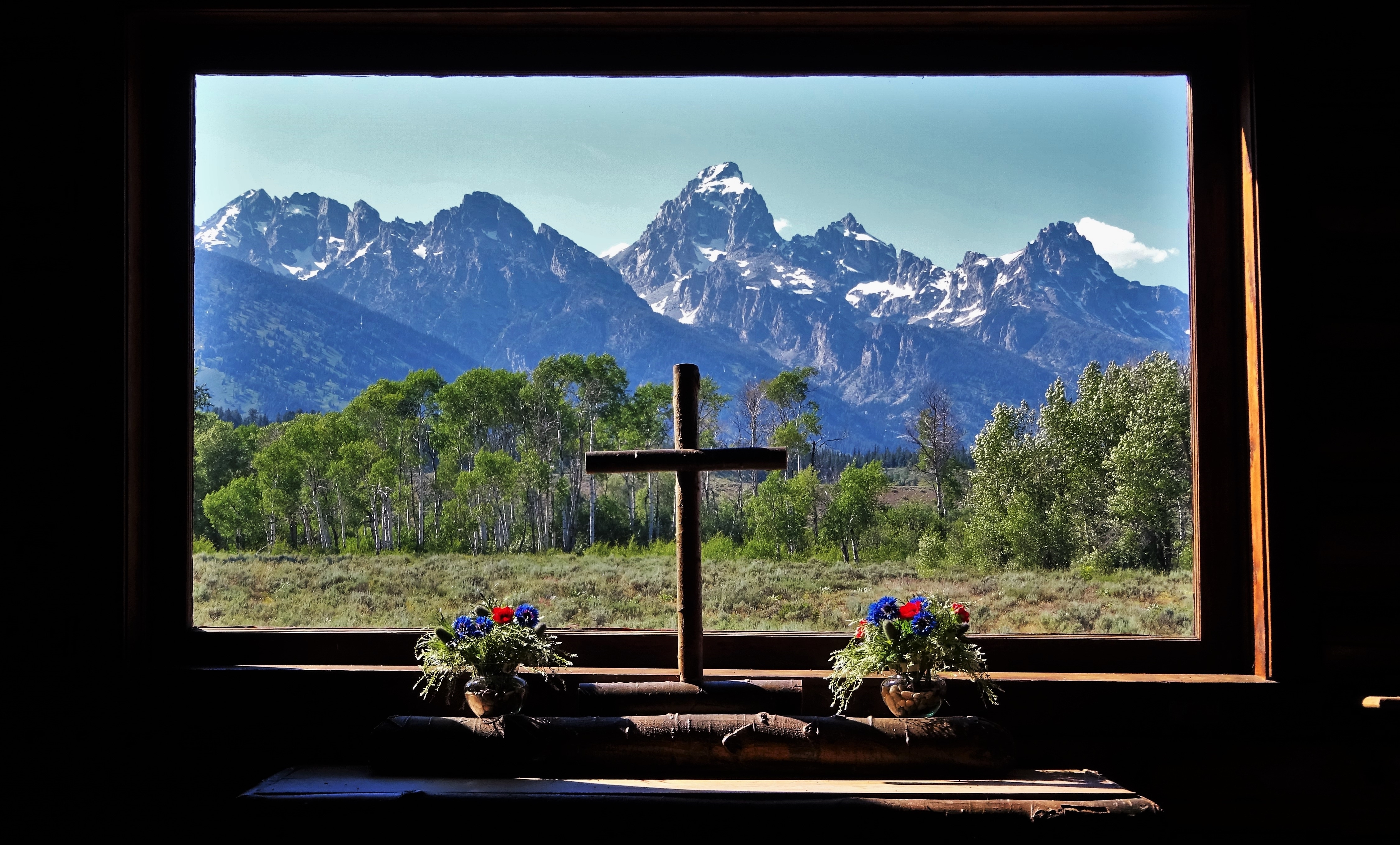
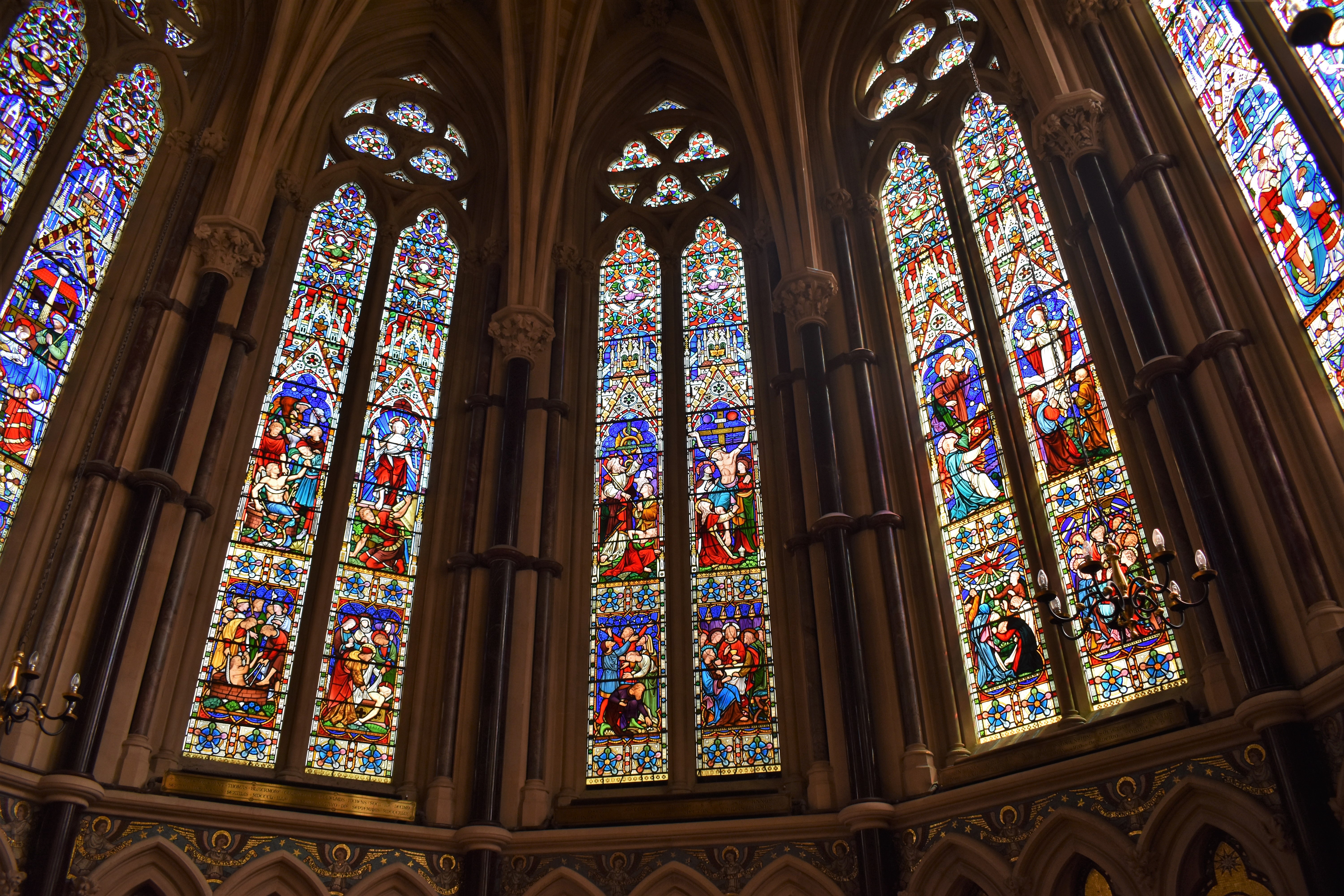 Our quick tour of the church allowed no more than a couple of minutes to gape, take quick photos, and then move on to the next campus building. Imagine taking the time though to simply sit in that sacred space and breathe in the Spirit. I would also love to have the opportunity to stand beneath that glorious window in awe of its artistic majesty.
Our quick tour of the church allowed no more than a couple of minutes to gape, take quick photos, and then move on to the next campus building. Imagine taking the time though to simply sit in that sacred space and breathe in the Spirit. I would also love to have the opportunity to stand beneath that glorious window in awe of its artistic majesty. ly voice. I was on the side porch of the house, a summer afternoon, listening to “I’ve Grown Accustomed to His Face,” and feeling very much in love!
ly voice. I was on the side porch of the house, a summer afternoon, listening to “I’ve Grown Accustomed to His Face,” and feeling very much in love!